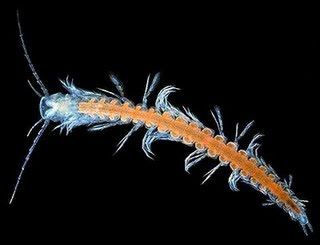Kingdom Animalia Class Remipedia Genus Speleonectes Phylum Arthropoda Order Nectiopoda | Subphylum Crustacea Family Speleonectidae Scientific name Speleonectes atlantida Rank Species | |
 | ||
Similar Speleonectes, Remipedia, Speleonectes tanumekes, Nectiopoda | ||
Speleonectes atlantida is a species of eyeless crustacean in the order Nectiopoda. It was discovered in August 2009 in the Tunnel de la Atlantida, the world's longest submarine lava tube on Lanzarote in the Canary Islands off the west coast of North Africa. Like other remipedes, the species is equipped with venomous fangs.
Contents
Description
Speleonectes atlantida is approximately 20 millimetres (0.8 in) long. Like most other remipedes, the species lacks eyes and is hermaphroditic. Adapted to life in caves, the long antennae sprouting from its head and the presence of sensory hairs along its body allow the crustacean to feel its way along the dark tunnel.
The species is equipped with venom-injecting fangs, a feature unique to class Remipedia among crustaceans.
Discovery
During a cave diving expedition to explore the Tunnel de la Atlantida, the world’s longest known submarine lava tube on Lanzarote in the Canary Islands, an international team of scientists and cave divers discovered the previously unknown species of crustacean, belonging to the remipede genus Speleonectes, along with two new species of annelid worms of the class Polychaeta. The species was named after the tunnel it was found in. It is morphologically very similar to Speleonectes ondinae, a remipede that has been known from the same lava tube since 1985, but DNA comparison studies proved that it is a second species. The divergence of the two species may have occurred after the formation of the 6 km (3.7 mi) lava tube during an eruption of the Monte Corona volcano some 20,000 years ago.
